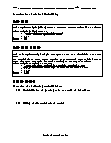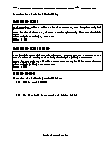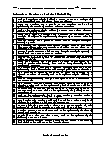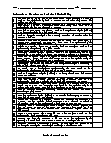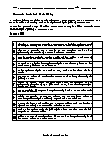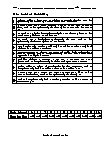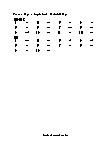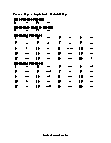Empirical Probability Worksheets
What is Empirical Probability? Typically, probability is the likelihood of the occurrence of an event. We can write probability in the forms of decimals and fractions. When probability id represented in decimal form, it ranges for 0 to 1. When an event shows a probability of 0, it means that a particular event has zero chances of taking place. However, when an event has a probability of 1, it means that a particular event will take place. When the probability is closer to 1, then the event is likely to happen, and when the probability is closer to 0, then it is less likely that an event would happen. For instance, an event with a probability of 0.7 is more likely to happen than an event with a probability of 0.1. Empirical probability is the type of probability that is calculated by doing experiments and conducting observations. The likelihood that the event will happen is based on the results obtained from the collected data. The mathematical formula for calculating empirical probability is written as: Empirical Probability = Number of times an event can take place/ total number of trials. For instance, a fair die is rolled 180 times, and you to find out the number of times 4 turned up. We know that each number on the die has an equal probability of 1/6. Therefore, the probability of 4 turning up is also 1/6. So, we will calculate 180 x 1/6= 30. The probability of 4 is 30 out of 180.
-
Basic Lesson
Introduces the concept of odds and probability favoring. What is the probability that you will pick an ace in a row out of a 52- card deck?
View worksheet -
Intermediate Lesson
This lesson focuses on selection probability. A large bag of balls contains 3 orange balls, 6 blue balls and 8 red balls. If a ball is chosen at random, what is the probability of getting a blue ball?
View worksheet -
Independent Practice 1
Students practice with 20 Empirical Probability problems. The answers can be found below. What is the probability of getting a number, which is a multiple of 8 as the product when two number cubes are rolled?
View worksheet -
Independent Practice 2
Another 20 Empirical Probability problems. The answers can be found below. David has to select a pen and a pencil from 6 different pencils and blue, black, green and red colored pens. Find the probability of selecting a red colored pen and any pencil.
View worksheet -
Homework Worksheet
Reviews all skills in the unit. A great take home sheet. Also provides a practice problem. Tom has 5 T-shirts and 7 shirts in his wardrobe. What is the probability of selecting a T-shirt from his wardrobe?
View worksheet -
Skill Quiz
10 problems that test Empirical Probability skills. A bottle contains 8 marbles: 2 are red, 3 are blue and 3 are green. What is the probability that one will pick a blue marble?
View worksheet
A Riddle...
Here's a simple (but funny) riddle to try out with your friends:
Question: What is an average pie?
Answer: Pie a la mode!
